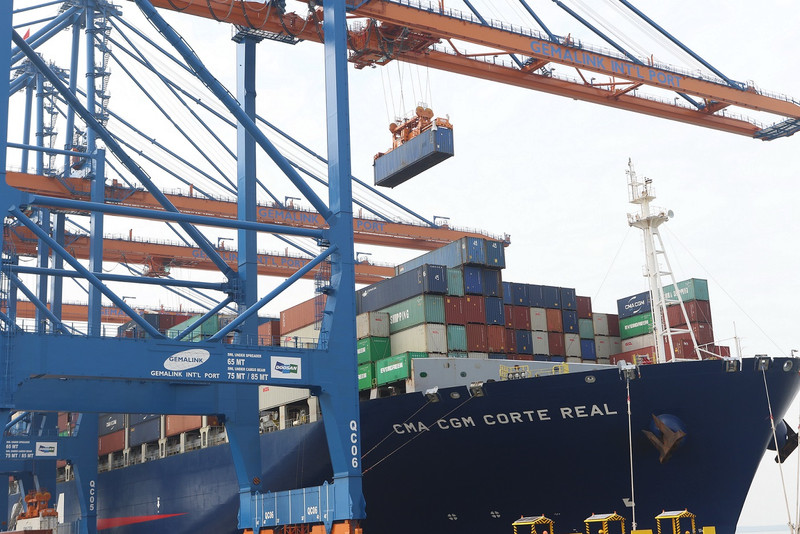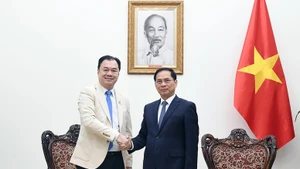According to the House of Commons Library (HCL), a research and information service based in the UK Parliament, the UK will be the first European member of the CPTPP and the first new country to join the agreement. The parties “will now take the final legal and administrative steps” before the formal signature at the end of 2023.
UK Prime Minister Rishi Sunak said joining the bloc would put the UK “in a prime position in the global economy to seize opportunities for new jobs, growth and innovation” and that it would put the UK “at the centre of a dynamic and growing group of Pacific economies.”
The UK government formally applied to join the CPTPP in February 2021. Then in
June of that year, the UK government published its strategic case for joining, including negotiating objectives, consultation response and preliminary impact assessment. The first negotiations with all 11 CPTPP members started in September 2021.
According to a new statement by the British government on the impacts of the CPTPP on the UK economy, over 99% of British goods exported to CPTPP member countries will be eligible for zero tariffs, improving goods market access for British firms. Businesses selling key UK exports such as cars and machinery will benefit from the removal of tariffs. In the long run, joining the CPTPP could lead to a 1.7 billion GBP (2.1 billion USD) boost in UK exports, to other CPTPP countries.
However, the HCL stated, “The economic benefits appear to be small”.
The UK government’s scoping assessment indicated that the long-run increase in GDP would be 0.08% thanks to the CPTPP. Trade expert Sam Lowe has pointed out that this is largely because the UK already has bilateral trade agreements with most CPTPP members.
The benefits would be larger if other countries, such as the Republic of Korea, joined the CPTPP in future, Lowe said.
Currently, the CPTPP covers 11 member nations including Australia, Brunei, Canada, Chile, Japan, Malaysia, Mexico, New Zealand, Peru, Singapore, and Vietnam. The agreement has come into force in 10 nations, except Brunei.
The UK already has trade agreements in effect with nine CPTPP members including Australia, Canada, Chile, Japan, Mexico, New Zealand, Peru, Singapore, and Vietnam.
Other economies have also applied to join or expressed an interest in doing so. These include China, Taiwan, Ecuador, Costa Rica, Uruguay, Ukraine, the Republic of Korea, and Thailand.
The HCL has also cited concerns that the UK might import more palm oil as a result
of the CPTPP’s tariff reductions on the product. The UK’s current tariff on imports of palm oil from Malaysia, with whom the UK does not currently have a bilateral FTA, ranges between 0-12%. These tariffs will be reduced to zero when the CPTPP enters into force for the UK.
“Environmental groups argue that palm oil production is linked to deforestation and damages the habitats of orangutans,” said an HCL released over a week ago. “On the issue of palm oil, the government has said it will pursue its environmental ambitions, including in multilateral fora such as the World Trade Organization, COP28, and through the Forest, Agriculture and Commodity Trade Dialogue.”
The UK Parliament also cited some commentators as having observed that agricultural standards, digital trade and investment protection provisions may be issues in the CPTPP negotiations.
Meanwhile, there have also been differences in approaching benefits from the agreement, so the negotiations may take longer.
For example, foreign media said Canada’s demand that Britain opens up its beef market thwarted hopes of a breakthrough during talks a few months ago.
Canada is now also negotiating a bilateral trade deal with the UK, while this European nation vies to join the bloc.
Together with Mexico, Canada is pushing for the UK to offer the same market access it granted on agriculture as it did in pacts with Australia and New Zealand. In those agreements, which have proven controversial among UK farmers, who fear the impact on their livelihoods, the UK has agreed to drop tariffs on beef and sheep meat imports over 10-15 years.
On June 12, at the ninth strategic dialogue between Vietnam and the UK in London, the Vietnamese side said they completely support the UK’s negotiations on the CPTPP. Vietnam will continue working with the UK on the latter’s CPTPP membership, with the determination of opportunities and hurdles that need to be removed in favour of businesses and investors of both economies.
“Vietnam reaffirms its strong support for the UK to join the CPTPP which, in addition to the positive impacts of the UK-Vietnam Free Trade Agreement (UKVFTA), will help both nations to further increase their trade and investment ties, which are on the rise. The UK’s participation in the deal will also bring about wonderful trade and investment opportunities to each CPTPP member,” said Vietnamese Minister of Industry and Trade Nguyen Hong Dien.
The Vietnam-UK trade and investment ties are largely driven by the UKVFTA, which took effect in May 2021, in addition to the Southeast Asian economy’s improved investment and business climate.
As part of the UKVFTA, 85.6% of tariff lines for goods imported by the UK from Vietnam, were eliminated in January 2021, and 99.2% will be removed by January 2027, according to the UK’s Department for International Trade.
According to the General Department of Vietnam Customs, the bilateral trade between Vietnam and the UK touched 6.84 billion USD last year, up 3% on-year. This included Vietnamese exports worth over 6 billion USD – up 5.2%, and imports valued at 771 million USD – down 9.2%.
The two-way trade hit nearly 1.6 billion USD in the first three months of this year, almost the same as last year's corresponding period, including Vietnamese exports of 1.4 billion USD and imports of 175 million USD.
Vietnam’s Ministry of Planning and Investment reported that accumulatively as of May 20, 2023, the UK’s total registered investment capital in Vietnam was 4.26 billion USD for 522 valid projects, including 3.73 million USD for the January-May 20 period.
Vietnam is now encouraging British companies to boost investment in Vietnam, in such areas as renewable energy, digital technology, finance and banking, innovation, and high-quality infrastructure.
The UKVFTA locks in 65% of all tariffs that have been eliminated since the EU-Vietnam FTA entered into force. This will increase to 99% of tariffs after a schedule of between 6-9 years. This secures import tariff elimination for products such as clothing, fabric and footwear – meaning customers and businesses may benefit from lower prices on these products. Tariffs will be reduced per a schedule that stipulates equal annual reductions from entry into force of the agreement.
With such commitments, the UK exporters to Vietnam and the UK importers from Vietnam stand to benefit. Specifically:
• For goods exported by UK exporters to Vietnam:
- 48.5% of tariffs lines were eliminated on January 1, 2021;
- 91.8% of tariff lines will be eliminated by January 1, 2027;
- 98.3% of tariff lines will be eliminated by January 1, 2029;
- 1.7% of tariff lines are partially liberalised through tariff rate quotas (the quota volumes are
consistent with Vietnam’s WTO commitments and duties within quotas will be removed by 2031)
or not entitled to preferential treatment
• For goods imported by the UK importers from Vietnam:
- 85.6% of tariff lines were eliminated on January 1, 2021;
- 99.2% of tariff lines will be eliminated by January 1, 2027;
- 0.8% of tariff lines are partially liberalised through tariff rate quotas (with preferential tariffs for in-quota products of 0%)
Source: UK Department for International Trade
















